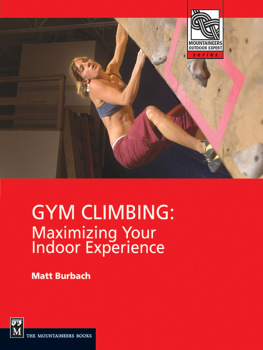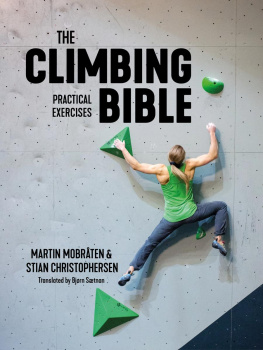
Note While every effort has been made to ensure that the content of this book is as technically accurate and as sound as possible, neither the author nor the publishers can accept responsibility for any injury or loss sustained as a result of the use of this material.
This electronic edition published in 2014 by Bloomsbury Publishing Plc
Bloomsbury is a trademark of Bloomsbury Publishing Plc
Published by Bloomsbury Publishing Plc
50 Bedford Square
London WC1B 3DP
www.bloomsbury.com
First edition 2013
Copyright 2013 John White
ISBN (print): 978-1-4081-8662-6
ISBN (ePdf): 978-1-4081-8663-3
ISBN (EPUB): 978-1-4081-8664-0
All rights reserved. No part of this publication may be reproduced in any form or by any means graphic, electronic or mechanical, including photocopying, recording, taping or information storage and retrieval systems without the prior permission in writing of the publishers.
John White has asserted his rights under the Copyright, Design and Patents Act, 1988, to be identified as the author of this work.
A CIP catalogue record for this book is available from the British Library.
Acknowledgements
Cover and inside photography by John White, Dave Willis, Paddy Cave, Philippe Galland and Aimee Roseborrough, further inside photography from Getty Images, Press Association Images, Heiko Wilhelm and Risk4Sport, see for full information. For any photography not credited please contact Bloomsbury.
To find out more about our authors and books visit www.bloomsbury.com. Here you will find extracts, author interviews, details of forthcoming events and the option to sign up for our newsletters.
Contents
ACKNOWLEDGEMENTS
Researching and writing this book has been an immense amount of fun. Ive made some new friends and reacquainted myself with lots of old ones, and theyve all been so helpful and generous with their time.
Id particularly like to thank the following people for providing equipment and expertise, for modelling (and sometimes posing) and for freely providing advice and ideas. In no particular order: Dave Birkett, Iain Wilfs Cafe Williamson and friends Ray Farrager, Andy Tilney and Kerry Bumby, Luke White, Elliot White, Ellen Spencer and Anna, Nick Wharton, Neil Cooper (The Fall Guy), Evolv sponsored climbers Adam Lincoln and Nick Moulden, Morgan Weymouth and family, Dave Willis, Richard Bailey, Will and Bill Birkett, Derek and Janet Capper.
Paul Cornforth at King Kong Climbing Walls, Kate Phillips and all the staff at Kendal Wall (Lakeland Climbing Centre), Rick at Evolv footwear, Lyon Equipment, Beal and Petzl, and several other climbing walls for being kind enough to allow photos to be taken including Reading, Milton Keynes, Northampton (especially Tom), Redpoint Birmingham, The Ice Factor, The Castle and The Arch, Aimee Roseborrough and Maureen Flett for invaluable help with the section on climbing injuries, Adrian Baxter of ClimbCoach for assistance with the chapter on training and to the many other climbers whose names I dont know or have forgotten thanks!
All page numbers refer to the print edition.
Image credits Photography by John White, Dave Willis, Paddy Cave, Philippe Galland, Aimee Roseborrough. Further photography: and 172 (bottom) Luka Dakskobler/
Demotix/Press Association Images (bottom right), 172 (top) and 173
Peter Scholz/Demotix/Press Association Images
Introduction
A BRIEF HISTORY OF ROCK CLIMBING
Climbing indoors has undergone a revolution since the first purpose-built indoor climbing walls were built in the 1960s and 1970s. In climbing terms its a revolution on par with that experienced in the mid-1900s, when rock climbing went from being the preserve of the wealthy to a working mans sport.
Gone are the days when an indoor wall was simply a means to an end used to learn a few practical skills and help outdoor climbers get a bit fitter for what was called the real thing.
Through the 1980s and 1990s, indoor climbing walls continued to act as catalysts for improvements in outdoor climbing standards but a new breed of climber was also emerging, focused simply on the gymnastic and competitive elements offered by indoor climbing.
Many exponents of indoor climbing started to shun the traditional forms of climbing, opting for the security of bolt-protected, weatherproof climbs indoors, and for bouldering. The high cost of travelling to, and staying at, outdoor climbing areas has been a contributory factor as well not to mention the price of the equipment.
By the first decade of the new millennium, indoor climbing walls were springing up everywhere, from primary schools and universities to massive, purpose-built centres offering hundreds of climbs and dedicated training facilities.
The most recent developments have included a proliferation of bouldering-only centres, appealing to those seeking an alternative way of keeping fit as well as to dedicated boulderers. Perhaps the most interesting fact of all is the proportion of this new breed of climbers who actually climb outside on real rock: many modern facilities report that between 70 and 90 per cent of their users do not climb outside at all.
What a contrast with the early days of climbing walls, when an estimated 95 per cent of users climbed outside as well!

A HISTORY CLIMBING OF WALLS
with assistance from Paul Cornforth of King Kong Climbing Walls
The history of artificial climbing walls probably starts in the 1930s with the construction of an artificial climbing wall out of doors the Schurman Rock, built at Camp Long, a Scout Camp near Seattle, from giant boulders of real rock.

 The Schurman Rock, Seattle
The Schurman Rock, Seattle
This was the birth of the concept of creating something artificial to climb and to train on. Training here refers to technical training such as learning to belay, manage ropes and hold falls and learning to climb specific climbing features such as cracks or friction slabs, rather than training to improve performance.
As a fantastic example of how an artificial climbing wall can inspire people, 12-year-old twin brothers Lou and James Whittaker did their first climbs on the Rock in 1941. In 1963 James Whittaker went on to make the first American ascent of Mount Everest. Not to be outdone, the following year, his brother Lou made the first ascent of the North Col of Everest.
Prior to the construction of the first artificial climbing walls in Britain, climbers used buildings and other artificial structures to train on. A classic example can be seen in the Abraham Brothers photo of 19th-century mountaineer Owen Glynne Jones on the unmistakable Barn Door Traverse at Wasdale Head in the Lake District.

 The Barn Door Traverse at Wasdale Head, the Lake District
The Barn Door Traverse at Wasdale Head, the Lake District
Students at Cambridge University famously used the heavily featured walls of the colleges for climbing and there is little doubt that the walls of bridges, viaducts and many other man-made structures would have been climbed for practice once the post-war boom in rock climbing began.













 The Schurman Rock, Seattle
The Schurman Rock, Seattle